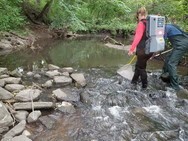The University of Minnesota Extension is hiring a Watershed Extension Educator! Please see the message below:
“We are hiring an Extension educator with faculty rank to focus on helping communities and watershed address their water management challenges. The educator will collaborate with diverse organizations to identify, develop, implement, and evaluate educational programs that will have a measurable impact on water resources by engaging with water professionals, policy-makers, farmers, land managers, and others across the state.
Required qualifications include:
- A master’s degree in natural or water resources sciences, hydrology, lakes management, limnology, watershed science and management, or closely related field.
- Experience and education in watershed management, lakes and aquatic ecosystems systems, hydrology, limnology, natural resources management, or related disciplines.
- A proven ability to develop and maintain effective working relationships and collaborations with colleagues, partners, and stakeholders, including those that may have diverse missions, goals, cultures, and backgrounds (e.g., regional water managers, community officials, legislators, program participants, and industry groups).
- Excellent oral and written communication skills.
- A demonstrated ability using technology to enhance learning.
- A valid driver’s license and own means of transportation, and applicable vehicle insurance.
- Use of personal cell phone.
The position will be based in one of the UMN Extension regional offices outside of the metro area, based on candidate preference and available space.
More information and instructions for applying can be found at the job posting or by visiting https://humanresources.umn.edu/content/find-job and searching for Job ID 334924.
The initial application deadline is February 3, 2020.
For questions about this position, contact Jodi DeJong-Hughes, Extension Educator – Water Resources, dejon003@umn.edu
For questions about applying online, contact Tiffany McMillan, Extension Human Resources, tiffmcm@umn.edu“




 January 21st, 2020
January 21st, 2020  knowtheflow
knowtheflow 







